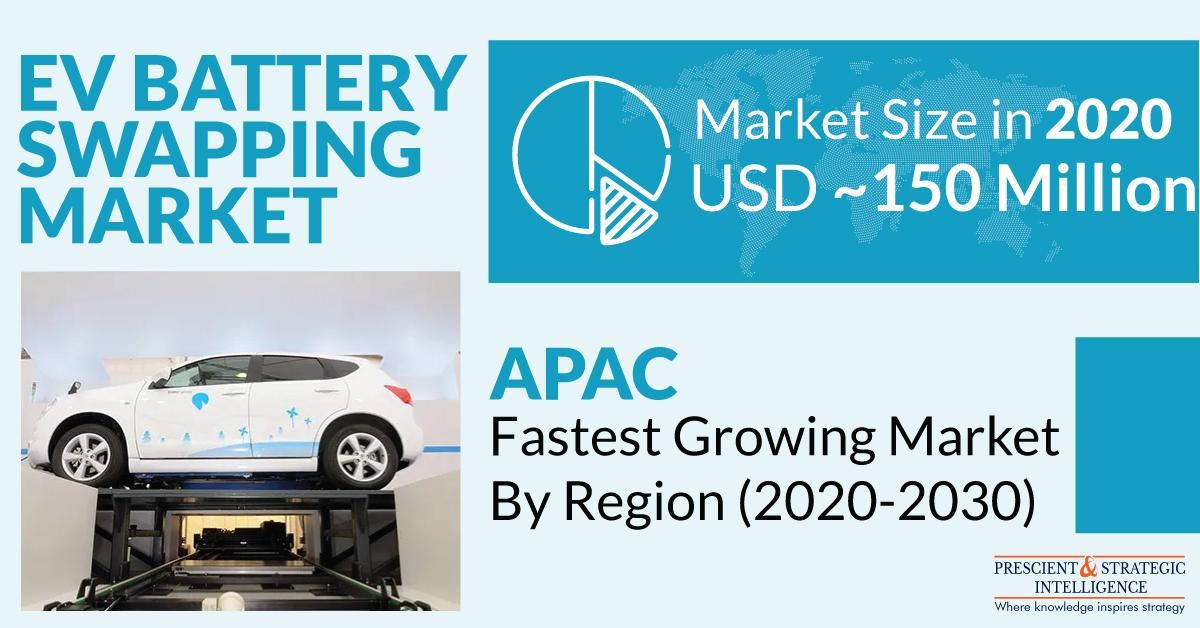The International Energy Agency (IEA) forecasts that the sales of battery electric vehicle (BEV) (cars) and plug-in hybrid electric vehicle (PHEV) (cars) will surge from 2,008,024 units in 2020 to 7,114,262 units by 2025 and from 969,034 units in 2020 to 4,226,493 units by 2025, respectively. The surging adoption of these new-energy vehicles, owing to the mounting environmental concerns and increasing implementation of government regulations for reducing vehicular emissions, will create a huge requirement for battery swapping services worldwide in the coming years.
Moreover, the rising need for lower waiting time for EV charging for long-haul commercial vehicles will help the electric vehicle battery swapping market prosper during 2021–2030. According to P&S Intelligence, the market generated $150 million revenue in 2020. As a majority of EVs across the world use a slow charging system, which usually takes up to eight hours to charge the battery, EV owners are switching to the swapping process because it helps in reducing the charging time to under three minutes, thereby enhancing the operating duration of such vehicles.
In contemporary times, companies such as NIO Inc., Lithion Power Private Limited, BYD Co. Ltd., SUN Mobility Private Limited, Kwang Yang Motor Co. Ltd. (KYMCO), Leo Motors Inc., Gogoro Inc., Panasonic Corporation, Tesla Inc., and BattSwap Inc. are dominating the electric vehicle battery swapping market. They are constantly engaging in facility expansions to facilitate the penetration of the battery swapping technology. For instance, in February 2021, Tesla Inc. inaugurated a battery swapping station in California to swap out discharged energy cells of automobiles with full charged ones.
Globally, the Asia-Pacific (APAC) region is expected to emerge as the largest user of the battery swapping technology in the upcoming years, owing to the rising demand for electric mobility and increasing focus of battery swapping technology providers on research and development (R&D) to improve the available technology. Moreover, the large-scale adoption of electric two- and three-wheelers, high prices of lithium-ion (Li-ion) batteries, and lack of adequate charging infrastructure will also steer the shift toward battery swapping technology in the region.
Thus, the soaring EV sales and escalating demand for reduced charging time of EVs will encourage the adoption of the battery swapping technology worldwide.

